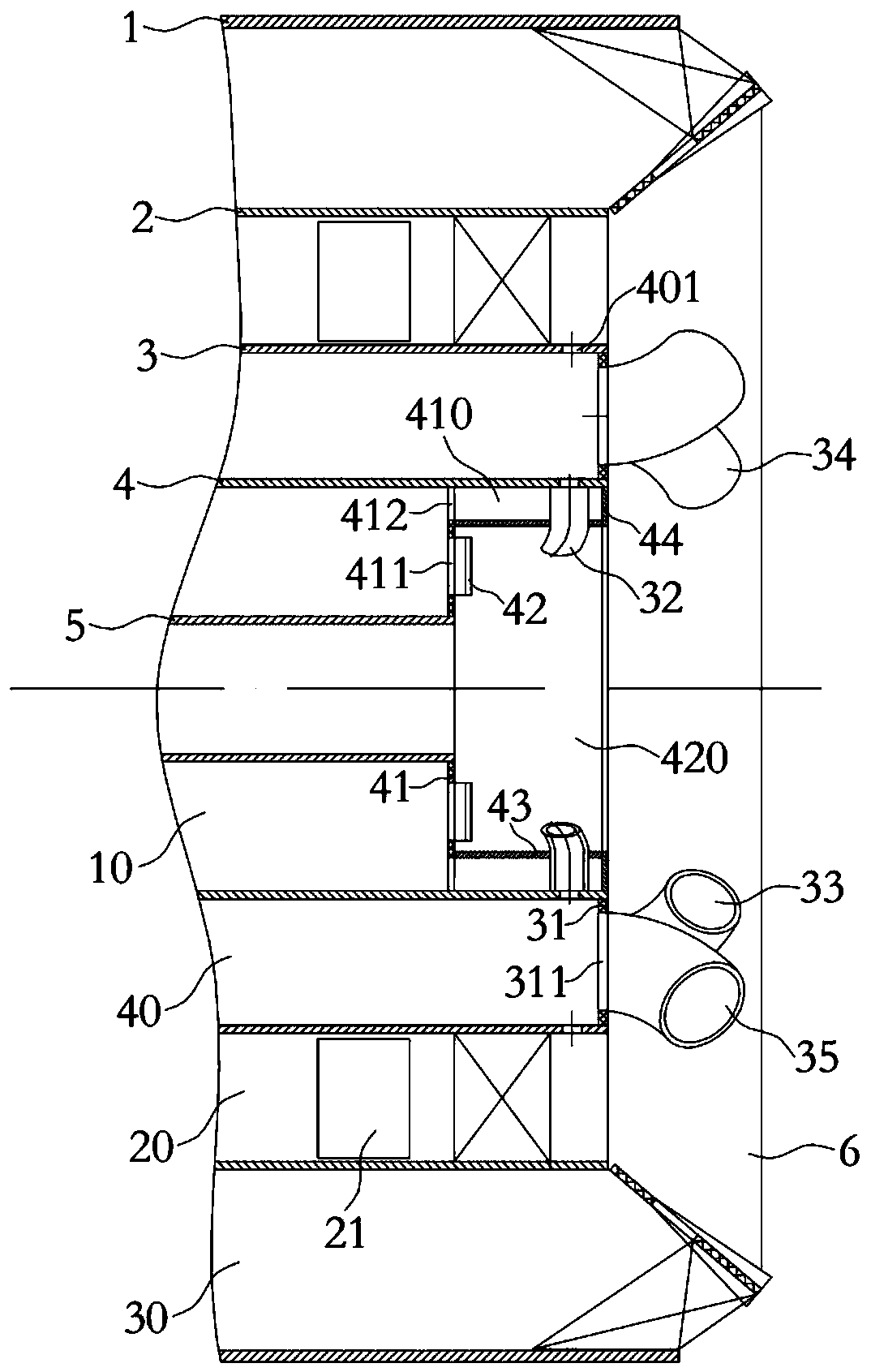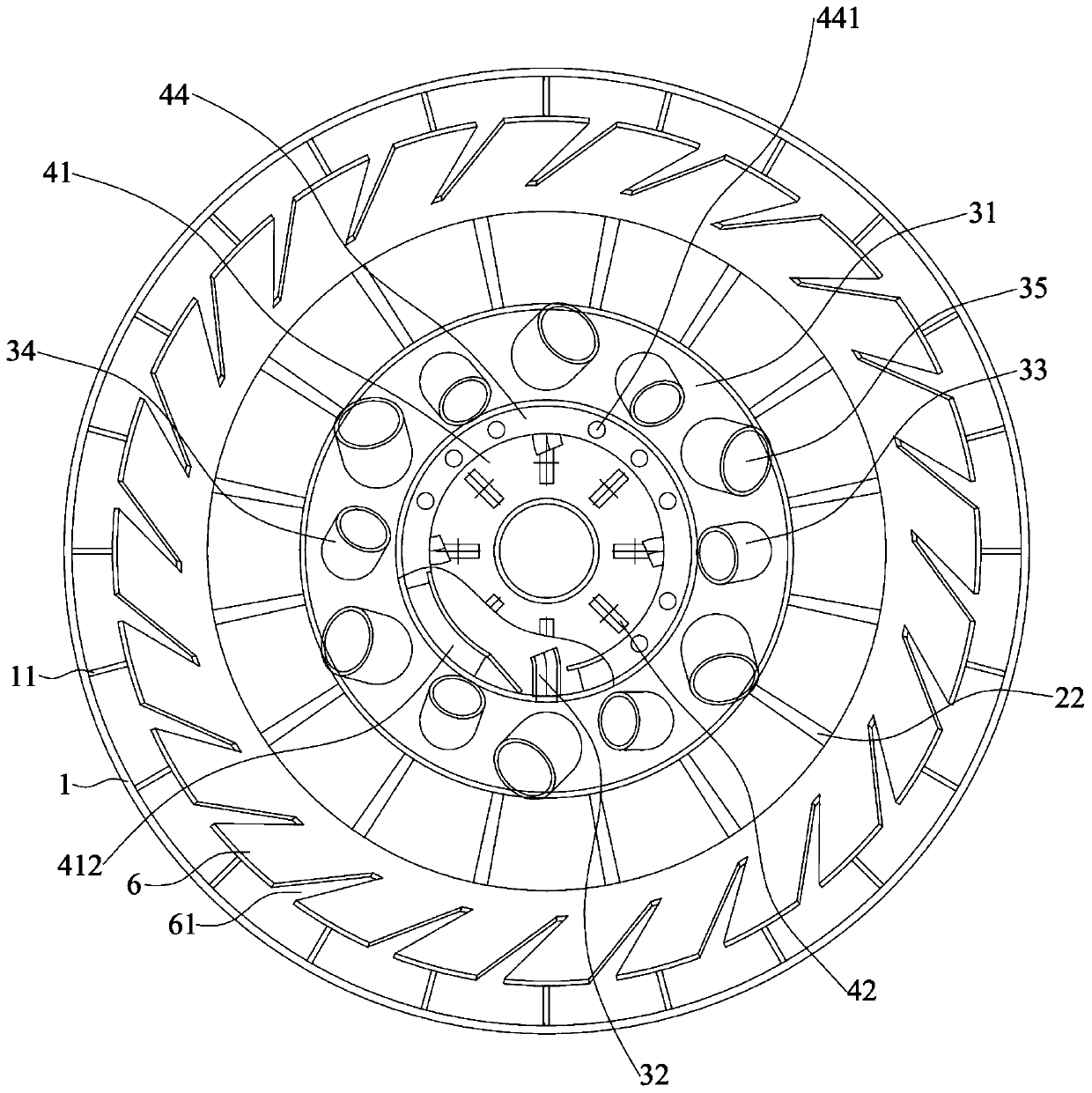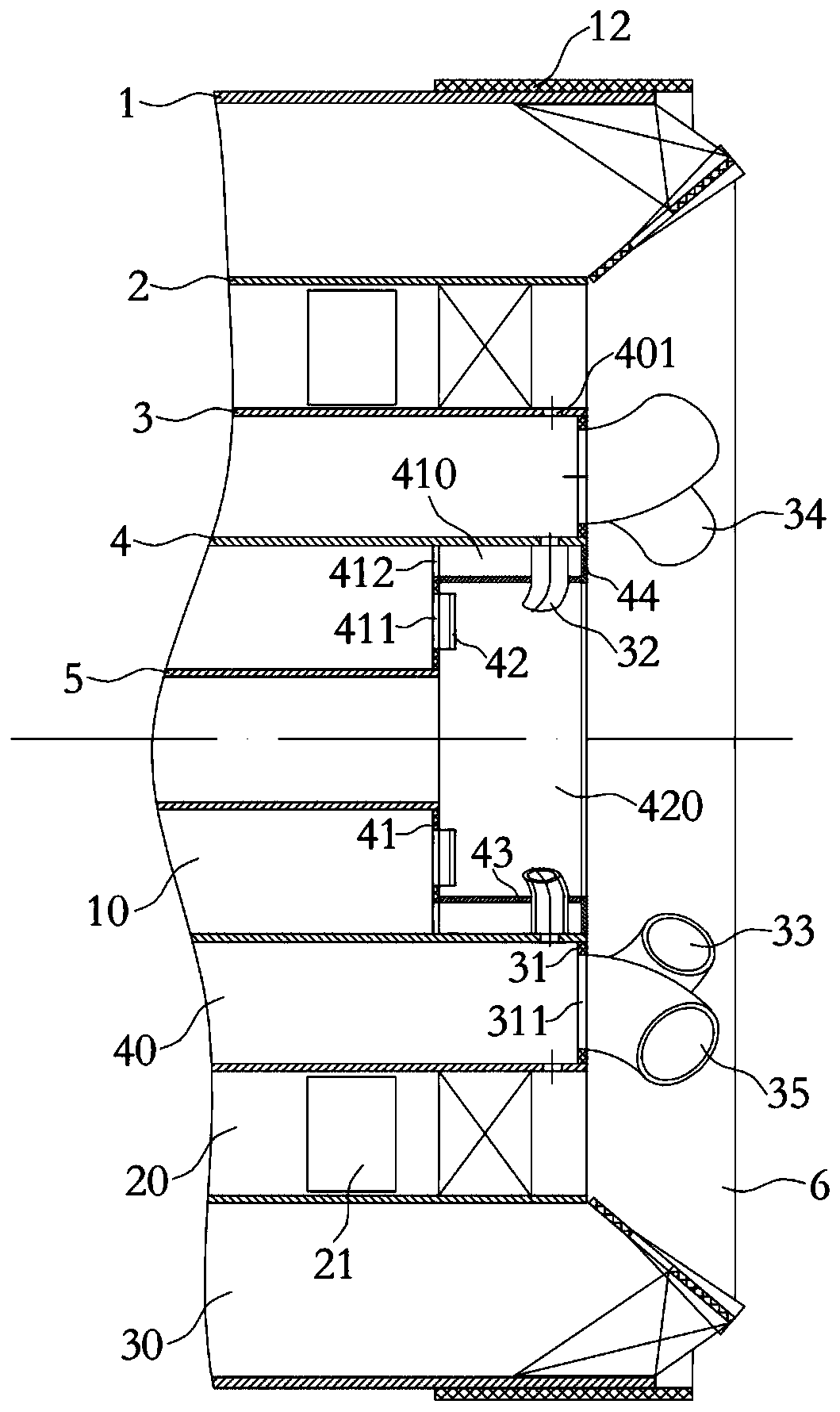Decoupling gas burner
A gas burner, gas technology, applied in the direction of gas fuel burners, burners, combustion methods, etc., can solve the problems of shortened burnout time, increased smoke loss, increased CO emissions, etc., to increase reducing combustion range, reduction of NOx generation, and effect of increasing flame diameter
- Summary
- Abstract
- Description
- Claims
- Application Information
AI Technical Summary
Problems solved by technology
Method used
Image
Examples
Embodiment 1
[0032] figure 1 The sectional view of the decoupling gas burner provided for this embodiment; figure 2 Front view of the decoupled gas burner provided for this example. This embodiment provides a decoupled gas burner, the fuel of which is natural gas or industrial gas, wherein industrial gas includes by-products of metallurgical industry such as coke oven gas, blast furnace gas and converter gas, and some are refinery dry gas (gas gas), production of methanol, synthetic ammonia and other chemical process release gas, analysis gas, etc., some are pyrolysis gasification gas of coal, biomass and garbage, and some are coal bed methane, biogas, raw coal gas, landfill pit gas or Other ultra-low calorific value tail gas and waste gas, etc. When installed and used, one end of the decoupling gas burner extends into the combustion furnace or other furnace body, and the fuel and air are sent into the furnace according to the required concentration, speed, turbulence and mixing method,...
Embodiment 2
[0071] figure 2 A cross-sectional view of the burner provided for this example. Such as figure 2 As shown, the structure of the decoupling gas burner provided in this embodiment is basically the same as the structure of the decoupling gas burner provided in Embodiment 1, except that the outer wall surface of the end of the outer cylinder 1 protruding into the furnace An extension 12 capable of sliding along the axial direction of the outer cylinder 1 is provided. The extension 12 is a cylindrical structure, and the inner diameter of the extension 12 is slightly larger than the outer diameter of the outer cylinder 1. By adjusting the extension 12 relative to the frustum-shaped cylinder The relative position of 6 changes the degree of deflection of the third-stage wind, so that the decoupled gas burner can adapt to different types of gas, saves the operation process of replacing the frustum-shaped cylinder 6 of different structures, and reduces the assembly time. Moreover, i...
PUM
 Login to View More
Login to View More Abstract
Description
Claims
Application Information
 Login to View More
Login to View More - R&D
- Intellectual Property
- Life Sciences
- Materials
- Tech Scout
- Unparalleled Data Quality
- Higher Quality Content
- 60% Fewer Hallucinations
Browse by: Latest US Patents, China's latest patents, Technical Efficacy Thesaurus, Application Domain, Technology Topic, Popular Technical Reports.
© 2025 PatSnap. All rights reserved.Legal|Privacy policy|Modern Slavery Act Transparency Statement|Sitemap|About US| Contact US: help@patsnap.com



